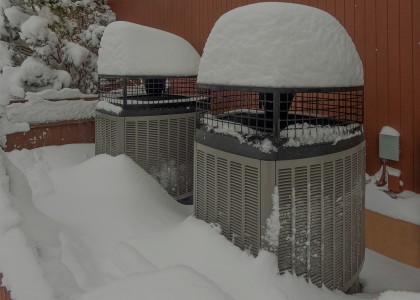The Biden administration can reclaim lost momentum on reducing automotive greenhouse gas emissions by setting clean car standards that catch up to those set by President Obama and ensuring the program achieves real-world benefits. These standards should be substantially stronger than those agreed to in a deal between California and some manufacturers during the last administration, which are not stringent enough.
The president got off to a quick start, issuing an executive order on his first day in office directing regulators to consider undoing both the Trump administration’s fuel economy and emissions standards rollback and its rule blocking California from setting its own standards. Few doubt that the Biden administration will fully restore California’s authority and the ability for other states to again adopt its standards.
Now eyes are on what the Biden administration will do to rescue the federal vehicle emissions and fuel economy standards the Trump administration rolled back in March 2020. Some observers suggest that an agreement California reached with four automakers in 2019, adopted through a memorandum of understanding (MOU), could be the basis for any new federal vehicle standards through model year 2026.
The California MOU was a response to the two Trump administration rules. The five car companies that signed the MOU agreed to follow standards falling between the Obama and Trump administrations’ standards in stringency. The California agreement played a crucial role keeping clean vehicle technology development moving in the United States while highlighting the folly of a regulatory rollback that the industry itself couldn’t justify. (Nearly all of the automakers had once supported the Obama administration’s rules.)
At this pivotal moment, however, we need standards that go further than the California agreement and usher in a swift transition to more efficient and much lower-emitting vehicles. Both the urgency and the feasibility of this transition are more evident today than they were just a few years ago. The Obama administration’s standard required a 4.7% annual rate of improvement, whereas the California deal requires 3.7% yearly progress. To catch up to the Obama plan, the Biden administration would need to mandate faster improvement than 4.7% in the initial years of the new rule, especially because it cannot go into effect immediately. This is not only economically achievable with current technology, but also vital if the Biden administration is to achieve its own greenhouse gas emissions goals, indicated by rejoining the Paris Agreement.
Recent trends in vehicle fuel economy underscore the importance of going beyond the ambition of the Obama standards. An EPA report released in January showed that the fuel economy and greenhouse gas emissions of new passenger vehicles have improved an average of just 1.4% per year since 2012; in fact, in 2019, the latest year for which final data are available, vehicle performance worsened. This happened in a period in which fuel economy standards nominally required substantial, steady improvement.
The problem lies in many features of these regulatory programs designed to increase manufacturer flexibility. For instance, standards self-adjust to changes in the size distribution of the vehicles sold, and the market’s multiyear shift toward SUVs and other larger vehicles has therefore seriously eroded progress toward a low-emissions vehicle fleet. The Biden administration’s standards should set a backstop on average fuel economy of all new vehicles sold each year, regardless of the size mix, to ensure an adequate rate of emissions reductions going forward.
Tighten up the program to deliver real progress
The Biden administration should also carefully consider other features of the standards. The treatment of electric vehicles (EVs) and “off-cycle” credits are two important issues. The California MOU allows manufacturers to meet up to 1% of the required 3.7% per year emissions reductions by giving extra weight to EVs in calculating automakers’ average emissions. These EV “multipliers,” along with the treatment of EVs as zero emissions vehicles, are extensions of temporary incentives in the Obama standards intended to jump start EV production. But counting each fully electric vehicle as 1.5 or 2 zero emissions vehicles will allow automakers to sell more high-emitting conventional vehicles, increasing their true average emissions rates beyond the levels set by the standards.
ACEEE calculated that, because of this, the California MOU would preserve only 65% of the emissions reduction benefit of the Obama administration’s standards over the covered model years, rather than the 79% that the 3.7% annual improvement would suggest. Moreover, many of the EVs that will generate the extra 1% emissions reductions on paper would be produced whether or not these incentives are in place. The Biden administration can avoid this loss in benefits by returning to the Obama rule EV provisions, rather than following the MOU.
The California agreement also makes it easier for manufacturers to get emissions reduction credit for off-cycle technologies (i.e. technologies with benefits that are not adequately captured in standard fuel economy testing). The MOU increases by 50% the total number of such off-cycle credits that can be earned from a set menu of technology options and also commits California to a “streamlined” process for reviewing manufacturers’ credit requests. Whether these off-cycle technologies deliver extra emissions reductions commensurate with the credits they are awarded has been a subject of debate for some time, and the full review process is vital in ensuring the integrity of the program. Moreover, emerging automation and connectivity technologies raise difficult new questions about how to determine the effectiveness of off-cycle technologies in reducing emissions.
ACEEE estimates that if this expedited review process leads to an increase in undeserved credits, the emissions reduction benefits of the MOU could turn out to be only half that of the Obama standards. The administration should avoid any changes to off-cycle credit provisions that could undermine the rigor of the program.
Drive the technology transition over the coming decade
The Biden administration has made the right call in deciding to revisit the Trump administration’s light duty vehicle emissions rules and should reinstitute or improve upon the Obama era rules as quickly as possible. Weaker standards are not justified when technology, such as electrification, has moved faster than forecasted, when the Obama rule was developed, and automakers have already invested in meeting those earlier standards.
The administration cannot stop at reimposing the Obama era standards. Current fuel economy standards go out only to MY 2026. Standards for subsequent years must be drafted promptly and put forward for public review. These standards should not only ensure that the efficiency of internal combustion engine vehicles continues to improve, but also drive the rapid electrification of light-duty vehicles sold in the United States to approach 100% of new vehicle sales by 2035, similar to California’s more recent EV sales mandates.

